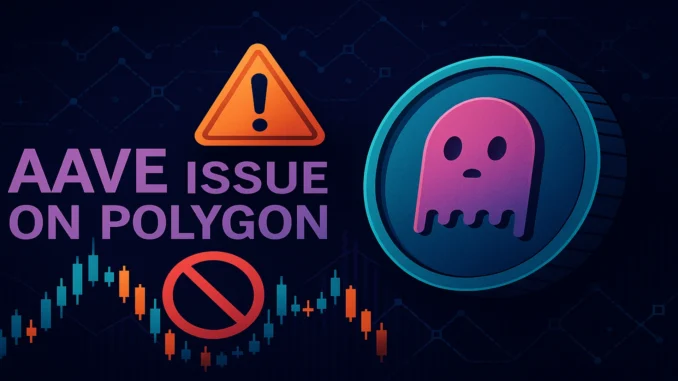
Aave V2 Bug Freezes $110 Million in Assets on Polygon
A bug in decentralized finance (DeFi) lending protocol Aave V2 on the Polygon network has locked users out of approximately $110 million worth of assets.
According to blockchain security firm BlockSec, the issue stems from the ReserveInterestRateStrategy contract deployed during an upgrade intended to optimize Aave’s interest rate model. Unfortunately, the update turned out to be incompatible with Polygon’s network, making it impossible for users to borrow, withdraw, or supply funds.
Funds Are Safe Despite the Issue
Aave developers confirmed that the issue affects only Aave V2 on Polygon, while V2 on Ethereum and Avalanche, as well as the V3 protocol, remain fully functional.
They emphasized that user funds are not at risk, as the bug only restricts interaction with the assets rather than compromising them. The team stated that the issue can only be resolved through governance, ensuring transparency and community oversight.
Governance Proposal Submitted to Fix the Bug
A new governance proposal has been submitted to address the issue, with the Aave DAO set to begin voting shortly. If approved, the fix will roll out within approximately seven days.
The timeline includes one day for voting to start, three days of active voting, one day of timelock on Ethereum, and an additional two days of timelock on Polygon.
A Reminder of DeFi’s Complexity
This incident highlights the complexity of decentralized finance systems operating across multiple Ethereum Virtual Machine (EVM)-compatible blockchains. Even small code mismatches between networks can cause major disruptions in smart contract functionality.
Aave remains one of the most trusted lending platforms in DeFi, with a total value locked (TVL) of $5.18 billion, of which $3.72 billion resides in Aave V2.
AAVE Price Unaffected
Despite the disruption, AAVE’s market performance remains stable. The token has gained 0.1% over the past 24 hours, trading at $64.85 at press time, indicating investor confidence in the protocol’s stability and responsiveness.


